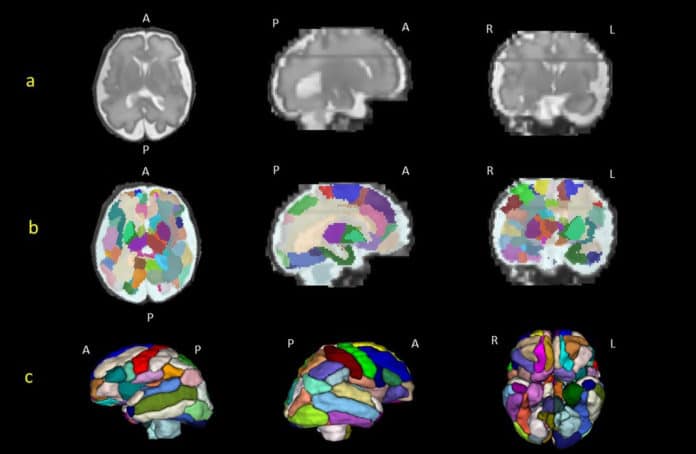Autism spectrum disorder (ASD) is a complex neurodevelopmental disorder. Both genetic and environmental factors during prenatal and postnatal development are believed to account for the emergence of ASD. It is known that early treatment improves language and cognitive abilities later. However, currently, the earliest diagnosis of ASD can be made only around 18 months of age.
A new study, led by Harvard Medical School Assistant Professor Emi Takahashi, suggests that autism-associated brain differences can be observed in the womb. It is possible using prenatal brain scans.
Using prenatal brain scans revealed significant differences in brain structures at around 25 weeks gestation between children who were later diagnosed with ASD and those who were not. An increased volume of the insular lobe may be a strong prenatal MRI biomarker that could predict the emergence of ASD later in life.
The study supports the previous claim that autism begins in early development.
Alpen Ortug, Ph.D., a postdoctoral research fellow at Athinoula A. Martinos Center for Biomedical Imaging, Massachusetts General Hospital, Harvard Medical School, first author of the study, said, “Our results suggest that an increased volume of the insular lobe may be a strong prenatal MRI biomarker that could predict the emergence of ASD later in life. It suggests possible opportunities to identify the disorder at an earlier age.”
Scientists analyzed 39 fetal MRI brain scans taken at Boston Children’s Hospital during the study. Nine children were later diagnosed with ASD, 20 were neurotypical, and ten did not have ASD. But those ten children had other health conditions that were also observed in the children with ASD.
All the scans were taken during 25 weeks’ gestation, on average.
After preprocessing, the images were segmented automatically with an atlas-based automated anatomical labeling method. They then compared the segmented brain regions between the different groups.
The brain’s insular lobe showed the biggest difference. In the ASD group, the brain’s insular lobe had a significantly larger volume. Also, children with ASD had substantially larger amygdala and hippocampal commissure than other groups.
According to scientists, the insula region deep inside the brain is thought to have a role in perceptual awareness, social behavior, and decision-making, among other functions.
Orig said, “Given that many genetic and environmental factors could affect the emergence of ASD starting in the fetal stages, it is ideal for identifying the earliest signature of brain abnormalities in prospective autism patients. To the best of our knowledge, this is the first attempt to semi-automatically segment the prenatal stage’s brain regions in patients diagnosed with autism later and compare different groups of controls.”
The study is presented at the American Association for Anatomy annual meeting during the Experimental Biology (EB) 2022 meeting, held in Philadelphia on April 2–5.
Journal Reference:
- Alpen Ortug, Yurui Guo et al. Human Fetal Brain Magnetic Resonance Imaging (MRI) Tells Future Emergence of Autism Spectrum Disorders.
